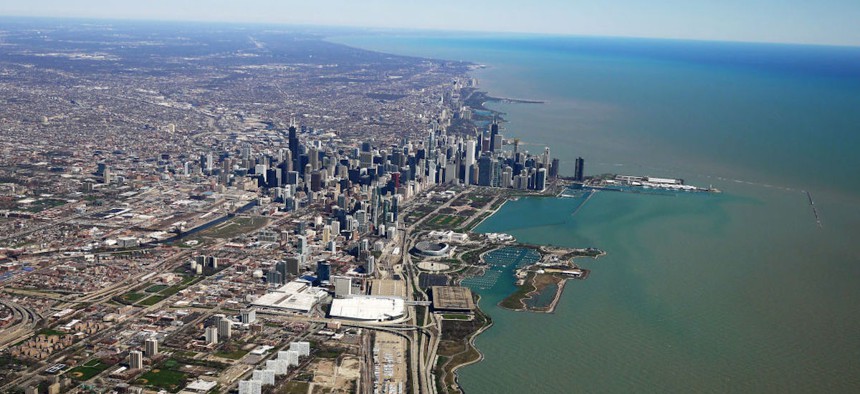Recharging the Rust Belt through climate innovation

Interim Archives/Getty Images
The cross-sector Chicagoland Climate Investment Alliance aims to transform the Midwest into a leading hub for climate technologies, economic development and investment.
Since the 1800s, the U.S. has been an engineering powerhouse, electrifying cities, revolutionizing manufacturing and extracting power from fossil fuels. But now as the country is reckoning with the environmental consequences of industrialization like greenhouse gas emissions and air and water pollution, leaders at all levels of government are crafting bold plans to transform the nation into a leader of climate resilience and sustainability.
In Illinois, for example, Gov. J.B. Pritzker signed the Climate and Equitable Jobs Act into law in 2021 to reduce the energy and transportation sectors’ carbon emissions. In 2022, Chicago released its Climate Action Plan with the ultimate goal of reducing carbon emissions 62% by 2040 through green workforce development, pollution reduction and public health service improvements.
Turning a fossil fuel-based economy into a green one, however, requires both government and industry to step up. “The public sector is making really pronounced efforts to be more green, but to do that, they need the business community to be in lockstep with them,” said Kyle Schulz, chief growth officer at Chicago’s economic development agency, World Business Chicago.
Public-private sector collaboration is driving a new initiative aimed at advancing climate resilience in the Midwest. Through the Chicagoland Climate Investment Alliance, businesses, and state and local governments, nonprofits and universities are partnering on climate-forward economic development.
The initiative will help “cities and policymakers be aware of new technologies [that] can help us meet those [climate] goals sooner,” Schulz said. Because the private sector tends to have access to more sophisticated technology and better financing, the partnership can foster faster adoption of advanced climate resilience solutions.
Having a strong cross-sector network also makes regions more attractive for researchers, small business startups, investors and federally funded climate projects, like the recently announced hydrogen hub program that aims to bolster the domestic market of clean hydrogen. The Midwest was selected as one of seven hub recipients, which Schulz said will help the alliance reach its green goals.
According to Schulz, the alliance will focus on four key pillars: breaking down sector silos, leveraging federal funding opportunities, investing in businesses’ climate innovations and supporting regional economic development in clean energy industries like solar panel manufacturing.
Investing in climate now could greatly benefit communities down the road, Schulz said. For example, the alliance aims to spur economic development by encouraging small business growth and prioritizing innovations across the agriculture, clean energy, water, food and recycling sectors, according to a statement from World Business Chicago announcing the program.
The program is led by the state of Illinois, the city of Chicago and private organizations, including Invenergy, ComEd, Nicor Gas, Jones Lang Lasalle and Wanxiang. The founding partners have already pledged $2 million to get the alliance off the ground and make sure it helps drive the regional economy.
One of the alliance’s first moves is establishing a climate consortium to submit a $1 billion proposal to the U.S. Environmental Protection Agency’s Clean Communities Investment Accelerator program, a funding opportunity to support the deployment of clean energy technologies in disadvantaged communities. If selected, Schulz said the project would help transform the Midwest from a Rust Belt to a hub for climate innovation and sustainability.
“This is an opportunity … to change how communities [and job opportunities] are built,” Schulz said.






